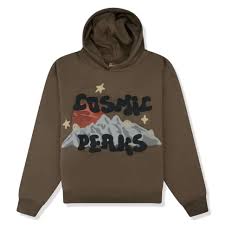
How HDPE Pipes Can Revolutionize Modern Infrastructure
In today’s fast-paced world, the demand for safe, efficient, and long-lasting piping systems has never been higher. Whether it’s water supply, gas distribution, or agricultural irrigation,this pipes have emerged as a preferred choice. Made from high-density polyethylene, these pipes offer unique features that contribute significantly to both large-scale projects and domestic setups. In this guide, we’ll walk through everything you need to know about HDPE pipes, including their types, uses, advantages, and key considerations.
Why HDPE Pipes Matter
The performance of any infrastructure system depends heavily on the reliability of its pipes. Traditional piping materials such as steel or PVC often fall short when it comes to flexibility, resistance to corrosion, or environmental safety. This is where HDPE pipes stand out. Their superior design, chemical resistance, and adaptability make them a smart solution for both urban and rural projects.
1. What Are HDPE Pipes Made Of?
Composition and Material Strength
HDPE pipes are produced from high-density polyethylene, a thermoplastic polymer known for its high strength-to-density ratio. This gives the pipes exceptional durability and performance, even in demanding environments.
Key Properties
-
Lightweight yet tough
-
High impact resistance
-
UV-resistant
-
Non-toxic and safe for potable water
2. Common Uses of HDPE Pipes
Water Supply Systems
From municipal pipelines to household plumbing, this pipes are widely used due to their corrosion resistance and flexibility.
Gas Distribution
The pipes’ leak-free jointing systems make them ideal for gas transport.
Irrigation and Agriculture
Farmers rely on pipes for drip and sprinkler irrigation systems, thanks to their adaptability and chemical resistance.
Sewage and Drainage
These pipes are ideal for underground drainage systems as they do not rust or corrode.
3. Benefits of Choosing Pipes
Durability
These pipes are known to last over 50 years, even under extreme environmental conditions.
Flexibility
Unlike rigid materials, this pipes can be bent, which reduces the need for joints and fittings.
Leak-Free Jointing
Heat fusion welding ensures a completely sealed joint, reducing water loss and contamination risks.
Eco-Friendly
Because of their low carbon footprint and recyclability, pipes are a sustainable choice.
4. Challenges of Pipes
Initial Installation Cost
While the long-term savings are significant, the upfront cost of equipment and skilled labor for fusion welding can be high.
Thermal Expansion
These pipes expand or contract with temperature changes, which must be considered during installation.
5. Types of Pipes Based on Application
| Type | Common Use | Pressure Rating |
|---|---|---|
| HDPE 63 | Agriculture, low-pressure supply | Low |
| HDPE 80 | Water supply and industrial pipelines | Medium |
| HDPE 100 | Gas lines, water mains | High |
| Corrugated HDPE Pipes | Drainage and stormwater systems | Moderate |
6. HDPE Pipes vs Traditional Materials
Comparison Table
| Feature | HDPE Pipes | PVC Pipes | Metal Pipes |
|---|---|---|---|
| Flexibility | High | Low | None |
| Corrosion Resistance | Excellent | Moderate | Poor |
| Installation Method | Heat Fusion | Solvent Cement | Welding or Threading |
| Lifespan | 50+ years | 20–30 years | 20–50 years |
Choosing the Right HDPE Pipe for Your Project
Selecting the right pipe depends on the intended use, pressure requirements, and environmental conditions. Working with a civil engineer or plumbing expert can help determine the correct grade and size.
Where to Buy High-Quality HDPE Pipes
Look for manufacturers who provide certified and tested products. Pipes should comply with international standards like ISO 4427 or ASTM F714 for pressure ratings and quality assurance. Always request product datasheets and test reports before purchasing.
Final Thoughts
HDPE pipes have transformed how we think about water supply, gas transport, and infrastructure development. Their reliability, strength, and eco-friendliness make them a future-proof investment for various applications. As cities expand and industries grow, these pipes will continue to be a backbone of smart, sustainable development.
FAQs
Are HDPE pipes suitable for drinking water?
Yes, they are non-toxic and safe for potable water applications.
Can HDPE pipes be recycled?
Absolutely. They are fully recyclable and contribute to sustainable construction practices.
What is the lifespan of an pipe?
With proper installation, these pipes can last 50–100 years.
Do HDPE pipes crack under pressure?
No, their high impact resistance and flexibility help them handle pressure without cracking.


